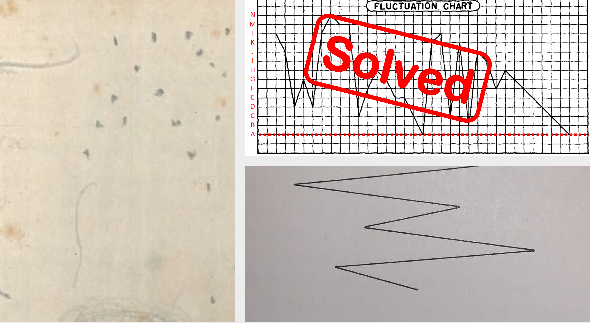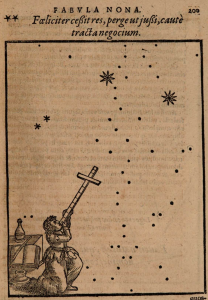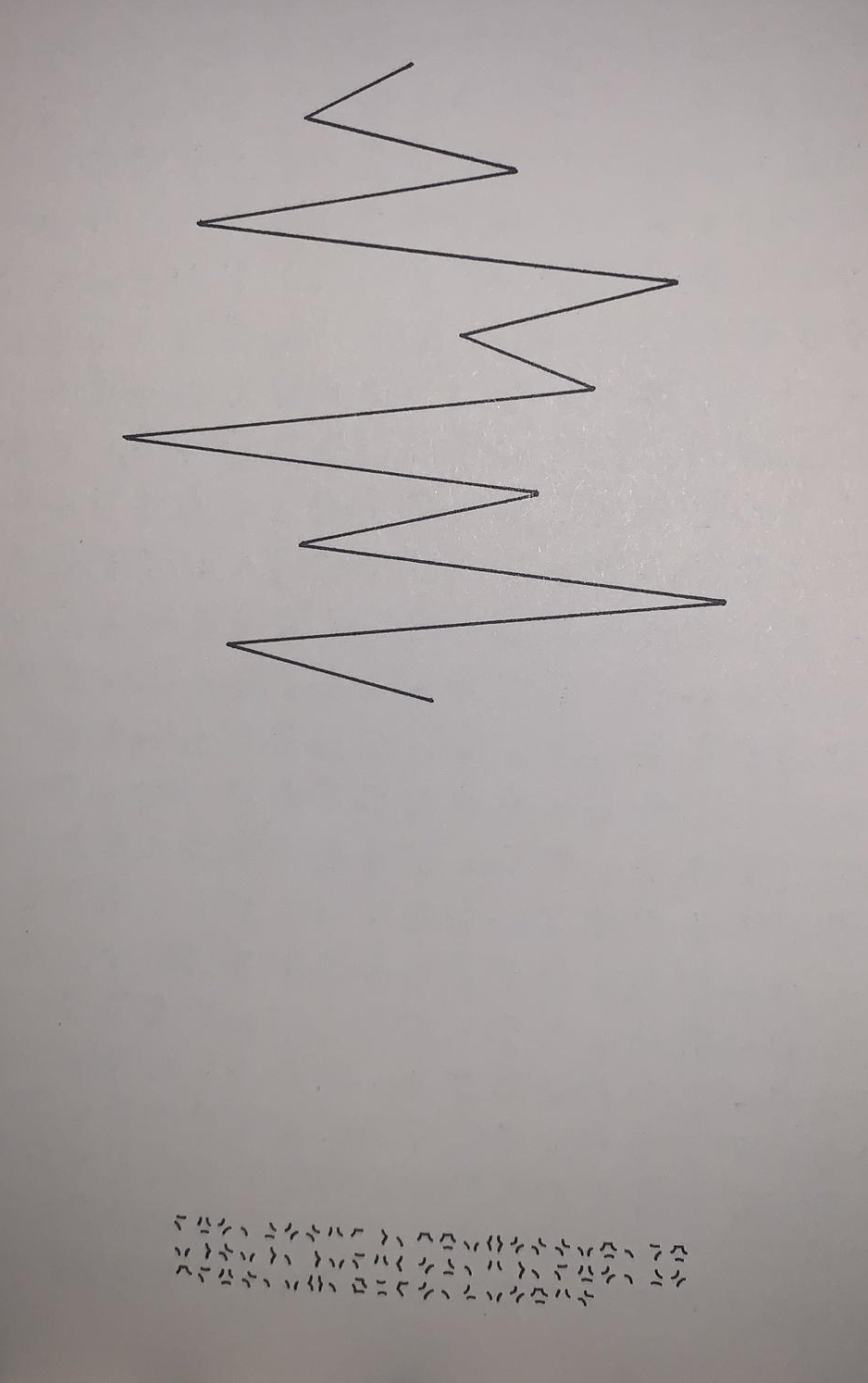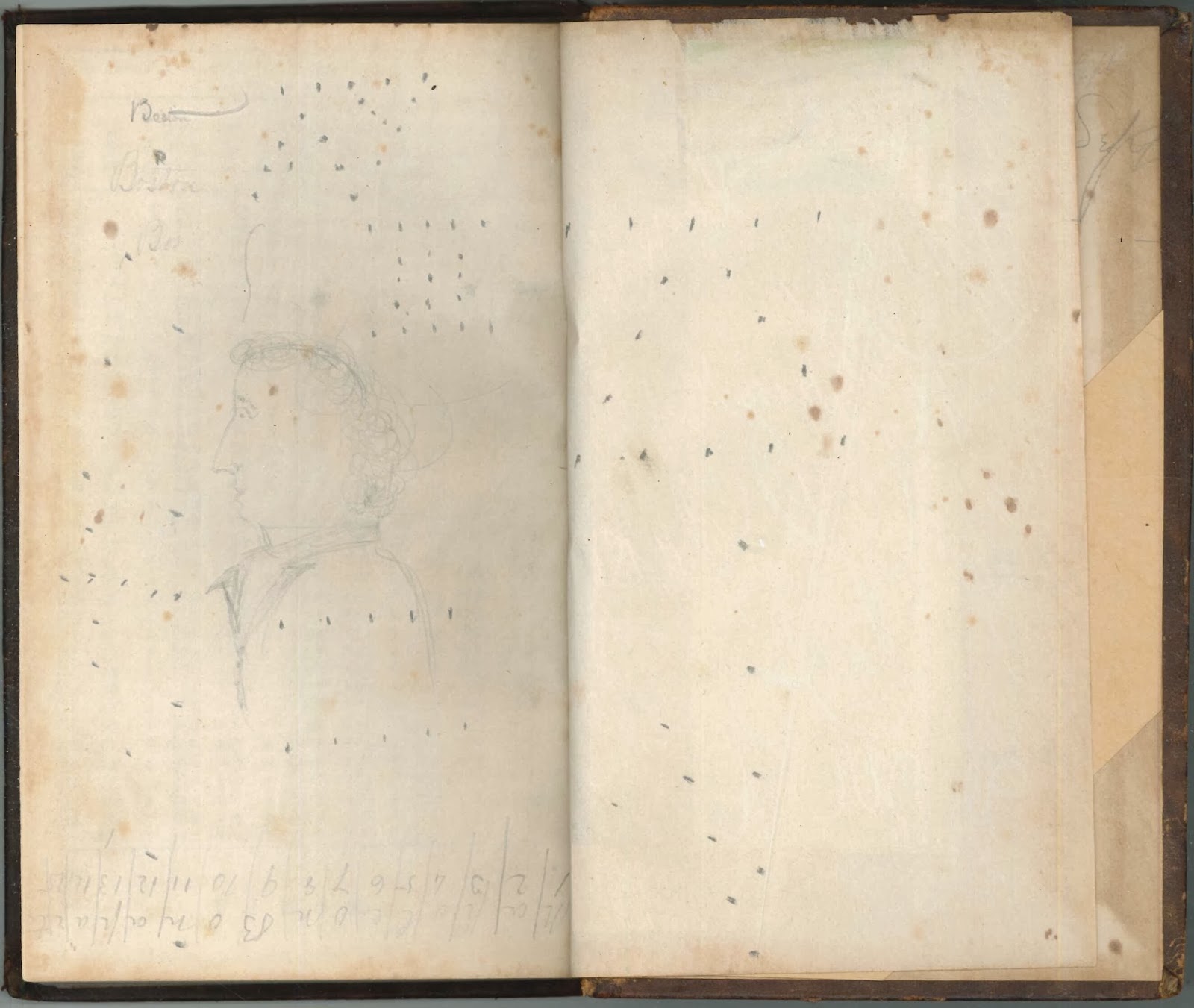World War II cryptogram solved, two similar puzzles not yet solved
Blog reader Rossignol has solved a World War II dot cipher. Two other dot ciphers, on the other hand, are still waiting to be deciphered.
The scan below shows a Christmas card sent by William and Elizebeth Friedman in 1931:
Even if you don’t recognize it at first glance, this is a coded text. The y-axis of the diagram is labeled with the letters from A to Z. If you read the diagram points from left to right (sometimes there are several in one column) in this way as letters, you get the following message:
FLUCTUATIONS VIOLENT COMES OUR XMAS WISH TO YOU MAY YOUR NEXT YEARS UPS BE MANY MAY YOUR DOWNS BE VERY FEW
Dot ciphers
An encryption method in which the letters are encoded by the position of dots is called dot cipher. This form of encryption is well suited to camouflaging an encrypted text (in this case as a diagram). Thus, it is primarily a steganographic method.
Dot ciphers are very old and have been used in numerous variants over the centuries. One example is the drawings of Johannes Walch (1551-1623), about whom I blogged in 2016.
More examples can be found in my book “Versteckte Botschaften – Die faszinierende Geschichte der Steganografie”.
The point cipher of Lambros Callimahos
A few weeks ago I blogged about NSA cryptologist Lambros Callimahos. In his book “Military Cryptanalytics” the following encrypted message is printed, which was used to train censors during World War II (the red marks are mine):
It doesn’t take much imagination to suspect a dot cipher here. Callimahos writes in his book that you can see that probably a text is encoded backwards and with an irregular arrangement of the alphabet.
Blog reader Rossignol from Paris was able to quickly solve the puzzle. He noticed that the last eight dots are as follows: H, G, F, E, D, C, B, A. These are the first eight letters of the alphabet in reverse order. This suggests that the author of the cryptogram defined the first letter of the plaintext as A, the second as B, the third as C, and so on, and that he then encoded backwards. Rossignol created the following transcription (starting with the last diagram point, then the penultimate, and so on):
ABCDEFGHFIJBKCLKACEEGHFCMMNLDGDJL
This encrypted text is not uniquely solvable. Rossignol, for example, found the following decryption:
WRAILE THE CORD AND WALL THE AMMUNITION
Much more likely is the following clear text, which Rossignol determined:
PRAISE THE LORD AND PASS THE AMMUNITION
This is the title of a patriotic song from the USA. Congratulations to Rossignol for this deciphering achievement! The mystery is solved.
The point cipher of Guy de Cointet
As luck would have it, I have recently come across two more presumed dot ciphers. One of them comes from the book “A CAptain from Portugal”, about which I blogged the day before yesterday, among other things:
Can a reader solve this ciphertext (if it is one)?
The Geodaesia dot cipher
I recently found another dot cipher via Google on the website of the Rauner Special Collections Library, part of Dartmouth College in New Hampshire (USA).
In 2014, the Rauner Library blogged about a geodesy book from 1796 in which two cipher texts are handwritten. The first is easy to decipher because the key is given. The second cipher text looks like this:
The solution is apparently not known. Can a reader help?
If you want to add a comment, you need to add it to the German version here.
Follow @KlausSchmeh
Further reading: Wer knackt diesen verschlüsselten Brief eines Sklaverei-Gegners?
Linkedin: https://www.linkedin.com/groups/13501820
Facebook: https://www.facebook.com/groups/763282653806483/








Letzte Kommentare